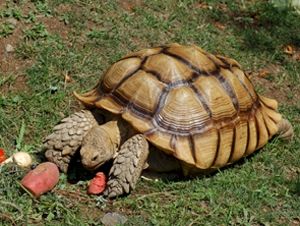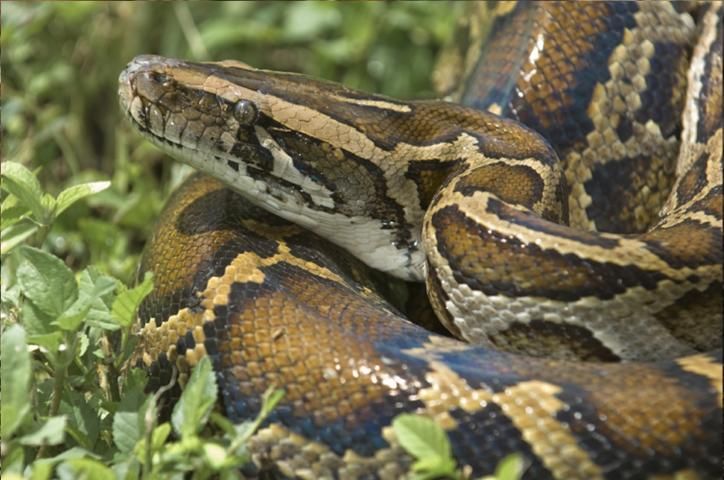This fact sheet will provide you with some basic information about reptiles and their care, in order to help you choose an appropriate reptile pet that will suit your lifestyle. This fact sheet is also available in a condensed, printable brochure format—https://edis.ifas.ufl.edu/pdf/UW/UW357/UW357-440868.pdf.


Important Considerations
When choosing a pet reptile, there are a few important questions you should consider:
-
How long will this animal live?
-
How large will this animal grow?
-
How much will it cost to feed and care for this animal?
-
What are the long-term requirements for this animal?
-
Where did this animal come from?
-
Will this animal be a safe pet for my household?
Make Sure Your Pet Reptile is Captive Born and Bred
Ask the breeder or pet shop questions about where and how the animal was bred. Taking the time to learn about your pet's origins will ensure that your pet was not removed from a wild population (also ask if eggs were collected from the wild) and will help to ensure that your pet will not have a lot of parasites in or on its body.
Learn your local captive wildlife laws!
Many states have laws dealing with wild and captive (native and non-native) reptiles. These laws range from space and permit requirements to prohibited species—some states don't even allow reptiles to be kept as pets! Find your local wildlife agency and learn more about your local laws regarding captive wildlife—see https://www.fws.gov/visit-us for a list of agencies. If you live in Florida, visit https://myfwc.com/license/captive-wildlife/ for a list of restricted species and links to information about these restrictions.
Remember—it is NEVER legal to release non-native wildlife!
Learn more about options for unwanted pet reptiles by reading Options for Unwanted Exotic Pets, available online at https://edis.ifas.ufl.edu/publication/uw353.
Basic Reptile Care
Before you choose to keep a reptile as a pet, you should be sure you are prepared to provide your new pet with the appropriate environment and care that it needs. All reptiles share the following basic requirements:
-
Adequate space and ventilation
-
Clean, safe substrate (i.e., bedding) and clean water
-
Quality, ultraviolet (UV) lighting (not needed for snakes)
-
Vitamin and mineral supplements
In addition to the basic requirements common to all reptiles that are listed above, each of the following groups of reptiles has its own unique requirements.
Snakes
-
Secure lid latches/clips are needed to prevent snakes from escaping.
-
Appropriate environment—each snake species has its own requirements. Most of the species recommended in this fact sheet can be kept at room temperature, but their enclosures should provide cooler and warmer spots.
-
Adequate humidity is also important for some snake species.
-
Dietary requirements vary depending on the snake species, but most can be fed thawed, pre-killed rodents.
Lizards
-
Basking areas or perches (with heat/UV source) are needed for some lizard species.
-
Dietary requirements vary greatly among lizard species, depending on whether they are herbivores, omnivores, insectivores, or carnivores. It is important to offer a wide variety of food.
Tortoises and Turtles
-
Adequate space and shelter are essential for tortoise enclosures.
-
Aquatic turtles need clean water.
-
Appropriate environment is critical for tortoises and turtles; pay close attention to temperature and humidity to prevent respiratory infections and other illnesses!
-
Dietary and UV lighting needs of tortoises and turtles should not be underestimated. Tortoises require a variety of fresh, nutrient-rich fruits and vegetables, not just lettuce!
Choosing a Reptile Pet
Some reptile species are more likely to be good choices to keep as pets.
Snakes
Cornsnakes, ratsnakes, milksnakes, and kingsnakes are usually good species to keep as pets. These snakes are readily available through local breeders or pet shops and are usually captive bred. In addition, they generally have a good temperament and basic care requirements.
Among pythons, the ball python is one of the best species to keep as a pet (especially for beginners) because of its smaller size and minimal caging requirements. This species of python is very popular and readily available in a variety of color patterns. However, you should know that these snakes can live for 20–30 years.

Lizards
Leopard geckos, bearded dragons, and blue-tongued skinks are usually good species to keep as pets. These lizards are available through local breeders or pet shops and are all small to medium-sized species with good temperaments and basic care requirements. Leopard geckos are especially easy to care for because, unlike other lizards, they do not require UV lights.
Although they are currently legal to purchase and keep as pets in Florida, tegu lizards do not make very good pets. They grow large (over 4 feet) and are a known invasive species in Florida. Consider a much smaller species if you are looking for a pet lizard.

Tortoises and other Turtles
Red-footed and yellow-footed tortoises are two of the better species to keep as pets. These tortoises are readily available at pet stores, have great temperaments, and remain relatively small. However, all tortoises require a large enclosure and need quality UV lighting and a nutritious diet, including a variety of fresh fruits and vegetables. You should also be aware that these tortoises can live for 25–60 years.

CAUTION! Other reptile species may be poor choices for pets.
Snakes
Burmese, reticulated, and African pythons, as well as anacondas are some of the species that usually make very poor choices to keep as pets (especially for beginners). Although they are readily available in most areas and are often inexpensive, these snakes can grow to over 20 feet long and can be dangerous. Many states will soon restrict or prohibit keeping these species as pets. In Florida, most species of large pythons and anacondas are not allowed to be kept as pests and may not be possessed without a permit.

Lizards
Most monitor lizards make poor pets. Monitor lizards are often readily available but some species can be dangerous to handle when fully grown. They also have extensive care requirements and need very large enclosures with quality UV lighting/exposure. In Florida, possession of Nile monitor lizards is restricted, and this species may no longer legally be sold as pets.
Green iguanas are another lizard species that usually make very poor pets. Green iguanas are readily available and are inexpensive but grow quite large and may become aggressive and difficult to handle as adults—as a result, finding new homes for unwanted iguanas is nearly impossible. They are prone to health problems if not fed a nutritious, varied diet, and they require large enclosures with UV lighting.

Tortoises and the other Turtles
African spurred tortoises, also known as spur-thigh or Sulcata tortoises, are one of the tortoise species that are usually a poor choice to keep as pets. This species of tortoise is widely available at small sizes, but can grow to weigh over 100 pounds! Most tortoises do not make good pets for beginners because they are very long-lived and many need large enclosures with carefully regulated heat and humidity.
Slider turtles and softshell turtles are among the aquatic turtle species that usually make very poor pets. These aquatic turtles require large enclosures with filtered water (or frequent water changes) and UV lighting. Many states restrict or prohibit the sale and possession of red-eared slider turtles, which are considered an invasive species outside of the Mississippi River basin; however, this species is sometimes sold illegally. In Florida, red-eared sliders are considered a "Conditional" species, and a permit is required to keep them as pets.

Credit: Luis García, The Wikimedia Project
Learn More about Care of Your Pet Reptile from these Online Resources
Melissa Kaplan's Herp Care Collection www.anapsid.org
American Veterinary Medical Association www.avma.org
World Chelonian Trust http://chelonia.org